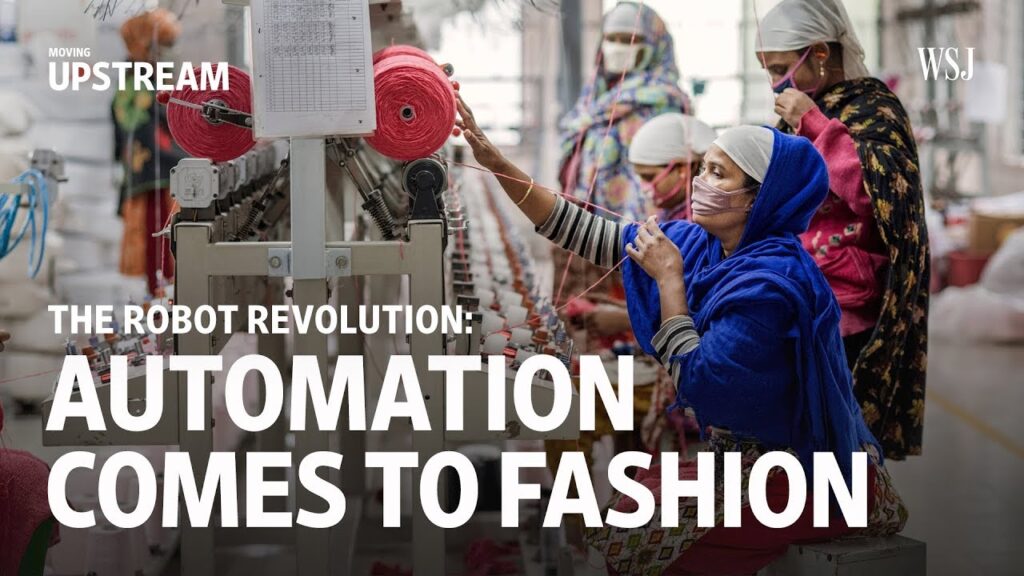Automation is Finally Coming into Fashion: Sewing Robots Revolutionize the Industry
Automation has long been hailed as the future of various industries, and the fashion industry is no exception. In a recent episode by Moving Upstream titled “The Robot Revolution: Automation Comes into Fashion,” it is revealed how sewing robots are transforming the way clothes are produced. These cutting-edge machines can produce garments at a pace that human hands simply can’t match, ushering in a new era of efficiency and productivity. This article will delve into the fascinating world of industrial automation robots and explore the implications of this technological advancement.
At the forefront of this revolution, we find the remarkable sewing robots. These state-of-the-art machines possess the ability to stitch fabrics with incredible precision and speed, vastly outperforming their human counterparts. A video featured in the episode showcases the seamless coordination between these robots as they effortlessly maneuver through delicate fabrics, creating intricate patterns and designs. The notion of a robotic workforce may seem like a concept borrowed from science fiction, but today, it is a reality that is reshaping the fashion industry.
Industrial automation robots bring numerous benefits to the table. First and foremost, their unparalleled speed and accuracy enable manufacturers to significantly shorten production times. With sewing robots capable of working tirelessly day and night, the days of long turnaround times for clothing orders could soon become a thing of the past. This trend promises to reduce costs, increase efficiency, and satisfy the ever-growing demand from fashion-conscious consumers.
Furthermore, automation ensures consistency in production quality. By eliminating human error and variation, sewing robots guarantee that each garment is crafted to perfection, maintaining a high standard across all pieces. This brings peace of mind to both manufacturers and consumers, who can now rely on a consistently superior product.
While some may argue that the rise of industrial automation robots threatens human jobs, the reality is more nuanced. Although it is true that some routine tasks previously performed by workers are now automated, new job opportunities also emerge in the field of robotics. As these machines become more prevalent, the need for skilled technicians to operate, maintain, and develop them increases. It is crucial for the workforce to adapt and acquire these new sets of skills to remain relevant in the changing manufacturing landscape.
The integration of automation in the fashion industry is not a sudden development but rather part of a larger trend within the manufacturing sector. Over the years, advancements in technology have revolutionized various industries, and the fashion industry is finally catching up. The symbiotic relationship between automation and fashion brings forth an exciting future where creativity and technological innovation go hand-in-hand.
This transformation is not limited to the production process alone. Automation can be extended to other areas of the fashion industry, such as inventory management, logistics, and supply chain. By optimizing these aspects, manufacturers can further streamline operations, reduce waste, and meet the demands of an increasingly fast-paced market. The possibilities are immense and underscore the potential for growth and improvement within the industry.
As with any major change, there are challenges to be overcome. The initial investment required to implement automation can be substantial, potentially posing a barrier for small-scale businesses. However, with time and advancements in technology, the costs are expected to decrease, making automation more accessible to a wider range of manufacturers.
In conclusion, the rise of industrial automation robots in the fashion industry signifies a pivotal moment in the way clothes are produced. The integration of these advanced machines brings about unprecedented speed, accuracy, and consistency. While it may raise concerns about job displacement, it also opens up new opportunities for the workforce. The fashion industry stands on the verge of a revolution, one that promises to increase efficiency, reduce costs, and elevate the overall quality of clothing production. As automation becomes increasingly prevalent, it is crucial for manufacturers to adapt and embrace this exciting new era.
Industrial Robot
“The Rise of Automated Fashion: Embracing the Robot Revolution in Industrial Automation”


